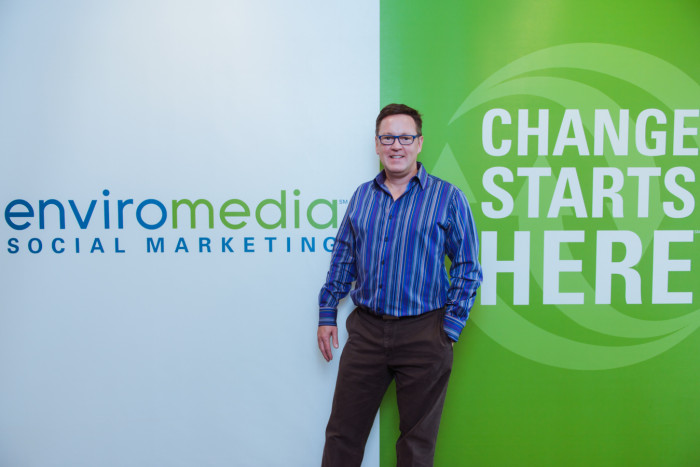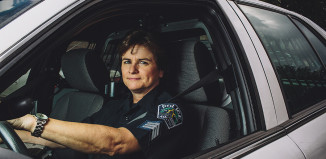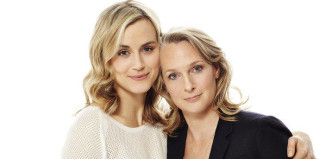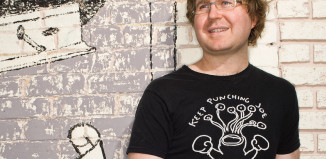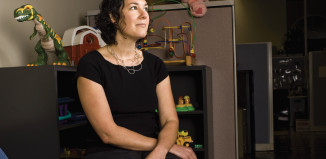Kevin Tuerff created EnviroMedia in 1997 with co-founder Valerie Salinas-Davis to help organizations and public agencies educate people and change behaviors related to environmental and public health. Now 18 years later, the agency has led hundreds of environmental marketing campaigns for corporate, government, and not-for-profit clients.
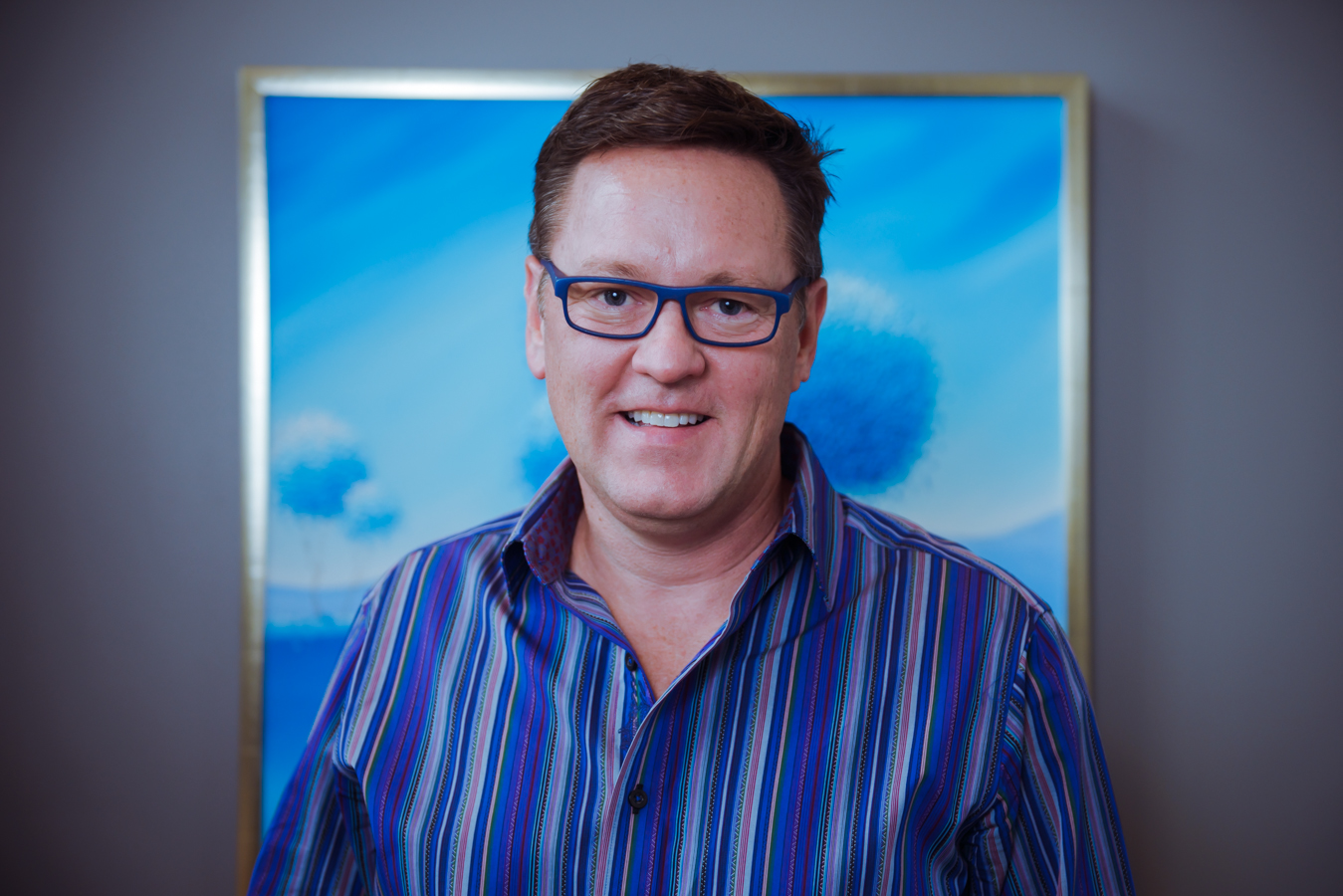
Photo by Devaki Knowles
But it’s not your typical ad agency. EnviroMedia has led some of the most well-known environmental and public health advertising initiatives in the country. For 14 years, it helmed the “Don’t Mess with Texas” campaign” to significantly reduce litter in the state. It guided tobacco-prevention campaigns leading to a 40 percent drop in teen smoking. In addition, it has broken new ground in public service by parsing advertising-speak for the general consumer with its Greenwashing and Leanwashing indices, which evaluate advertising claims companies make about the positive environmental or health impacts associated with their products. EnviroMedia recently made a big step towards increasing its national profile: in late 2014, it was greenlighted to bid on federal projects.
Given the impact the company has had, it’s not surprising that Tuerff has become a civic icon: In recognition of his leadership of green initiatives in Austin, the city named his company a platinum member of Austin Green Business Leaders. In addition to leading ambitious initiatives with his company to address environmental and public health challenges, Tuerff gives back in other ways. He was elected to Travis County Water District 17, guest teaches at the University of Texas at Austin, and sits on the City Council’s Climate 2050 Committee.
I had looked forward to hearing Tuerff’s insight on behavior change and social movements, on succeeding as an environmentalist in Texas, and perhaps most important, on why he has a two-story red slide in his company’s new Eastside office. Our conversation did not disappoint.
Nice building you have built here! Can you tell me more about it?
It has solar panels, and is made of reclaimed brick. People say green products cost too much, but that’s not the case anymore. It’s a symbol of what we stand for. We got our start on East 5th, in a windowless office, so for us this location [on East 5th and Robert Martinez Jr.] is a homecoming in a way. We’ve been in the new office for one year, since last Christmas, and employ 45 people.
You’ve come a long way. What was it that interested you and Valerie in working in this field originally? And what’s it like campaigning for environmental causes in Texas?
Valerie and I had been working on statewide campaigns for the state environmental agency. I’d go all around the state doing pollution prevention evaluations. And we ran the Texas governor’s awards for environmental excellence under Ann Richards and George W. Bush; but when Bush took office, our budget was cut by 90 percent.
One of our projects was to create Texas Recycles Day, a public-private partnership. When you have very little money, you learn that all you can do is leverage your money. We ended up growing the recycling rate from 14 to 29 percent in Texas. I went to a national recycling congress and shared our results, and said we could get the same response if we developed America Recycles Day.
I asked who was interested and left the meeting with a stack of business cards. We had to build partnerships again. In our first year we got 42 states to participate and got a lot of major partners: Home Depot, the Environmental Defense Fund, the Steel Recycling Institute, and many others. In the 90s our goal was for 50 percent of waste to be recycled. Recycling education has suffered since then and recycling has plateaued at less than 40 percent of waste diverted from landfills.
“In my work for the state I have met a lot of people from the LGBT community working to improve our environment. I think that in the struggle for equal rights you learn that to create change you have to act on your passion.”
I’m interested in your perspective on behavior change, given your vantage point as both an advocate for sustainability and also as an out gay man.
I never believed in my lifetime that we’d make such big advances in marriage equality. The fight for women to get the vote took 80 years. The LGBT fight has taken a lot less time, for many reasons. The mass media attention is a critical component. Ellen came out in her TV comedy and there’s been constant news coverage regarding lawsuits [for marriage equality]. When people became more aware of LGBT people, their minds were changed. Mass media can change attitudes and behaviors. You can’t do it in a single tweet or press release. It takes repetition.
In my work for the state I have met a lot of people from the LGBT community working to improve our environment. I think that in the struggle for equal rights you learn that to create change you have to act on your passion.
A hypothetical. Let’s say California’s government has hired you to run a campaign to change behavior contributing to the drought. What would you do?
You have to educate people about where water comes from. When you do that, people will be twice as likely to conserve.
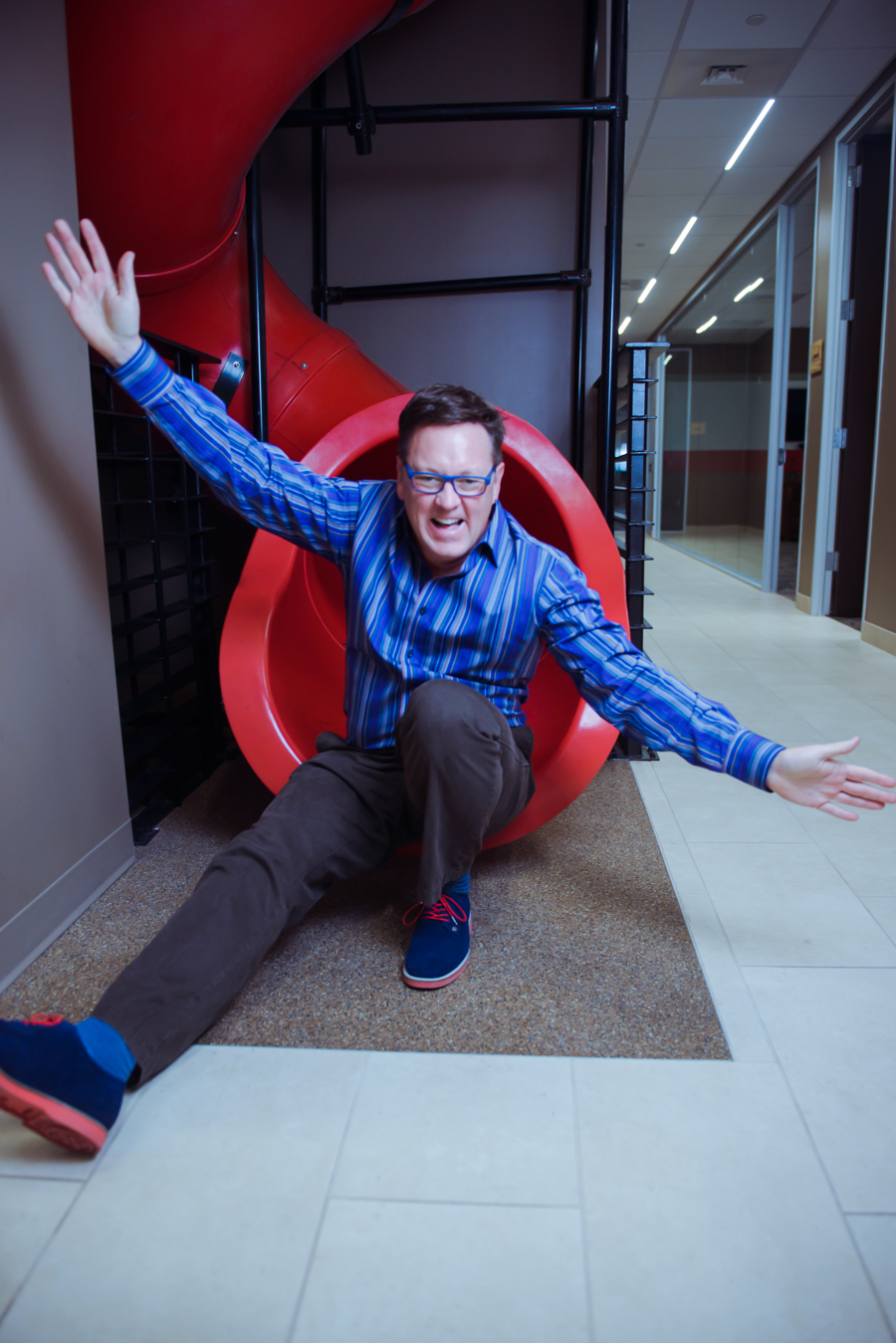
Photo by Devaki Knowles
Let’s go a bit closer to home. Your company’s focus on human behavior has affected how you’ve sought to shape EnviroMedia’s company culture. For you, what’s the key to a happy, healthy workplace? And what does the big red slide in your new office have to do with all this?
As business owners Val and I want to work in a place that’s fun and meaningful. It’s not by accident that our first core value is fun! We work on things where we make a difference and get paid for it. But it’s hard work and so we try to make the environment like a family atmosphere. When you design your own office you get to have it your way. We called it our new toy when we opened the office. The “Enviroslide” from the second to first floor is made from recycled plastic.
I noticed a bike in the hallway, too. Is that yours?
I’ve never been one of those bike people, but now I am. I had a car. But I was paying for a parking place, so I decided to sell it. My friend taught me what it took to be a confident urban cyclist: know you have a right to your space in the lane. It’s great that you can put your bike on the bus or light rail–which, by the way, is jam-packed. And the Southern Walnut Creek Trail [on the Eastside] is 7.3 miles long–it’s an amazing hidden gem. I have an electric bike and a regular one. And I’m lucky enough to live downtown and have a 15-minute commute.
Sounds like you’re busy!
I am, but fortunately I’m lucky enough to do a lot of traveling for work. I love getting away, and my partner Michael loves to travel as well.
One more question for you: What do you think is the most important opportunity Austin has, environmentally speaking? And what needs to happen for that opportunity to be realized?
Addressing climate change is big. I’m honored to sit on the City Council’s climate advisory committee. The Council passed a resolution to be a greenhouse gas neutral city by 2050 or sooner. The committee is looking at what to do to hit those goals. We’re aiming to curb emissions from transportation, from electricity made with coal—we must change to solar and wind and reduce consumption—and from solid waste—by curbing methane emissions from landfills and recycling stuff that we all buy.
Interview by: Katie Matlack
Photos by: Devaki Knowles
For L Style G Style – storytellers of the Austin LGBT community.


















